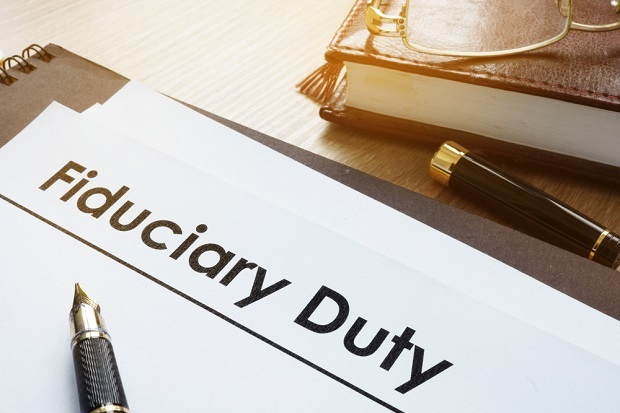 The public bought into "fiduciary" hook, line, andsinker without a clear understanding of the why. Moresignificantly, the evidence lay buried behind the ivy-covered wallsof boredom. (Photo: Shutterstock)
The public bought into "fiduciary" hook, line, andsinker without a clear understanding of the why. Moresignificantly, the evidence lay buried behind the ivy-covered wallsof boredom. (Photo: Shutterstock)
A decade ago, if you ran into the proverbial man-on-the-street,he'd have no clue of the importance of using a fiduciary to manage his assets. Today, it'smuch more likely he'd tell you, "Yes, having a fiduciary is veryimportant." Of course, he might be hard-pressed to tell youwhy.
|More on that in a moment.
|In the meantime, how did we get from 10 years ago totoday? I had a chance to talk to Skip Schweiss, incoming FPApresident, about this consumer transition, what it means, and howmuch more needs to be done (see "Exclusive Interview: Skip Schweiss Says PublicToday 'Much More Aware' of Need to Work With Fiduciary,"FiduciaryNews.com, November 19, 2019).
|Maybe you can pin the whole thing on John Oliver. In June of2016, the comedian's HBO Show "Last Week Tonight with John Oliver"featured an exposé on the DOL's (then) new "fiduciary" rule. In that now-famous 20-minutesegment, millions of Americans came to understand this "fiduciary"thing. Maybe they didn't quite understand what made it important,but Oliver's mass market made those masses believe "fiduciary"meant better investment returns and a more comfortableretirement.
|OK, we all know it's a little more complicated than that. Andthat could spell trouble.
|Why? Because the public bought into "fiduciary" hook, line, andsinker, without a clear understanding of the why. Moresignificantly, the evidence lay buried behind the ivy-covered wallsof boredom. Fiduciary advocates, so excited in the moment, simplywent with the prevailing current.
|They didn't stop to think for a moment that, while they had won(temporarily) the minds of the regulators, they had failed toprovide the solid (and empirical) reasoning for their cause.
|It's not as if it isn't there. It is. I've had a hand inreporting on it. That reporting was actually cited in a footnote ofthe White House release promoting the new rule.
|But it was a footnote, not a headline. The public can't beexpected to read the footnotes. And many never get past theheadlines. And those headlines made a promise.
|What happens in the next sustained bear market? Will the publicthink it was duped because, for all their support of "fiduciary,"it failed to protect their downside? Will those competitorsunwilling to follow the fiduciary imperative seize the opening andsay, "See, I told you so"?
|Schweiss is right when he says "there's still plenty of evidencethat consumers could be better educated on these issues." There maystill be time to get on with this education.
|And there may now be a window of opportunity to move the ballforward. Recently, the SEC signaled it may want to consider therole of revenue sharing in this whole conflict-of-interest matter.Morningstar quickly and quite vocally echoed this concern.
|It's not a new concern. It's also a concern long ago addressedby academic research. This, in fact, was the subject of the articlecited by the White House release. It involves real numbers.
|They say numbers lack a certain pizzazz; math puts people tosleep. Yet, without numbers, the case cannot be made.
|So, what can be done? Rather than trying to make up yardage inone long pass, maybe a drip-drip-drip strategic of three yards anda cloud of dust might be just what's needed to wear down adisinterested public. It's not an attention-grabbing headline, butover time it gives impressive weight to the fiduciary argument.
|It is that gravitas that will be needed during the next bearmarket. Because, when the opposition points to investment lossesand says, "See, I told you so," the fiduciary can quickly counter,"It could have been worse – you could be suffering fromthe double whammy of a down market and conflict-of-interestfees."
|That's a comeback that would certainly make John Oliver smile awry smile.
|READ MORE:
Complete your profile to continue reading and get FREE access to BenefitsPRO, part of your ALM digital membership.
Your access to unlimited BenefitsPRO content isn’t changing.
Once you are an ALM digital member, you’ll receive:
- Critical BenefitsPRO information including cutting edge post-reform success strategies, access to educational webcasts and videos, resources from industry leaders, and informative Newsletters.
- Exclusive discounts on ALM, BenefitsPRO magazine and BenefitsPRO.com events
- Access to other award-winning ALM websites including ThinkAdvisor.com and Law.com
Already have an account? Sign In
© 2024 ALM Global, LLC, All Rights Reserved. Request academic re-use from www.copyright.com. All other uses, submit a request to [email protected]. For more information visit Asset & Logo Licensing.








